With the Health Facilities Innovation Forum overlapping with Election Day, we decided to host a debate on a timely issue: the future of healthcare and the implications for facilities leaders.
Jordan Cram, CEO of Enstoa, moderated the debate which featured facilities leaders with diverse backgrounds (academic, nonprofit and for-profit). Debaters included: Frank Aucremanne, Executive Director for Real Estate, Planning, Design, Construction & Facility Operations at the Cleveland Clinic; Kip Edwards, VP Development & Construction at Banner Health; Lee Levicoff, Network Director of Planning & Construction at St. Luke’s University Network; Brian Holmes, SVP Real Estate Development & Deployment at Texas Health Resources, and Mark D’Arcy, VP Design & Construction at UHS, Inc.
Despite the differing perspectives, one fact was agreed upon: new business models need to emerge to thrive in this time of disruption.
Facilities at the Strategy Table
How does the role of facilities leaders at the strategy table create value? Edwards and Holmes discussed how their participation in strategy benefits Banner Health and Texas Health Resources--and there wasn’t much debate, as both agreed on the importance.
“In a world with scarce capital as our reimbursement gets squeezed, we constantly debate about trade-offs:
The struggle is always between investing in existing infrastructure or the future with new buildings, and it’s essential to be an active participant in that strategy process.”
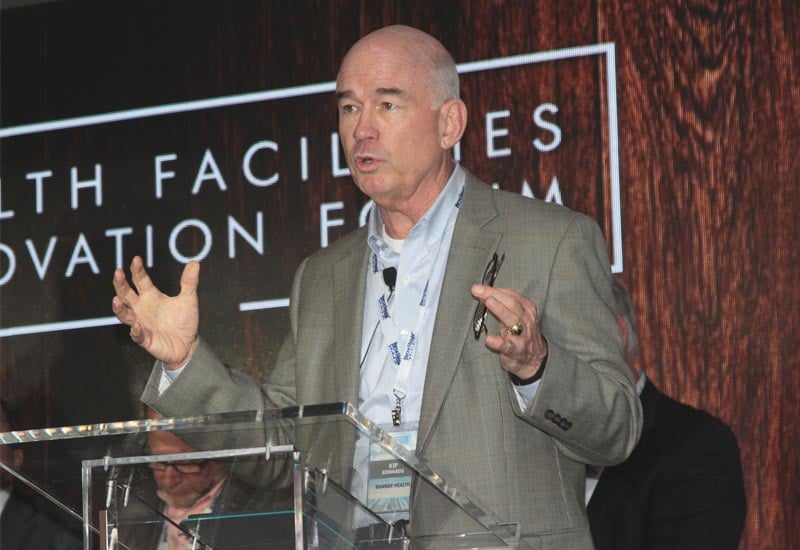
Kip claimed it’s crucial to provide input on site conditions and educate the group on existing assets, so there’s a voice for preserving and investing in them.
Holmes claimed that with pressure on healthcare to take more financial responsibility, facilities and strategy must work together to provide more value to patients. “The traditional fee-for-service model puts all the financial risk on a patient’s insurance company, and we must get strategic about making sure patients have good outcomes, informing them about their health and treating their families well."
“What about the value we could provide to work with you in advance to come up with a plan to monitor your plan and prevent future illness? But then the question is, how do we get paid for that? So what’s happening is large health systems like THR are combining with insurance providers. Health systems are taking on a bit of the risk and selling that product directly to employers.”
The implications for facilities are tremendous, Holmes says.
“It’s a real big change because we’re not trying to attract people to our hospitals.
If I’m not getting paid by volume or services, it means I care very much about the facility I treat you in and now I want to make sure I have facilities in the least-expensive locations possible in your neighborhood and keep you out of our hospitals. The hospitals become more of a big ICU operation and everything else is done outside the walls of the hospital.”
Off-Campus Acquisition
We asked two facilities leaders in opposite situations how they strategically handle off-campus acquisitions: Whereas Aucremanne needs to acquire practices for Cleveland Clinic, Levicoff for St. Luke’s University Network needs to place doctors in clinical care locations.
Aucremanne points out the importance of providing better access for patients--but says acquisitions are now far more complex with doctors protecting their negotiating position and legal, finance, planning, design, construction, branding, and more to consider.
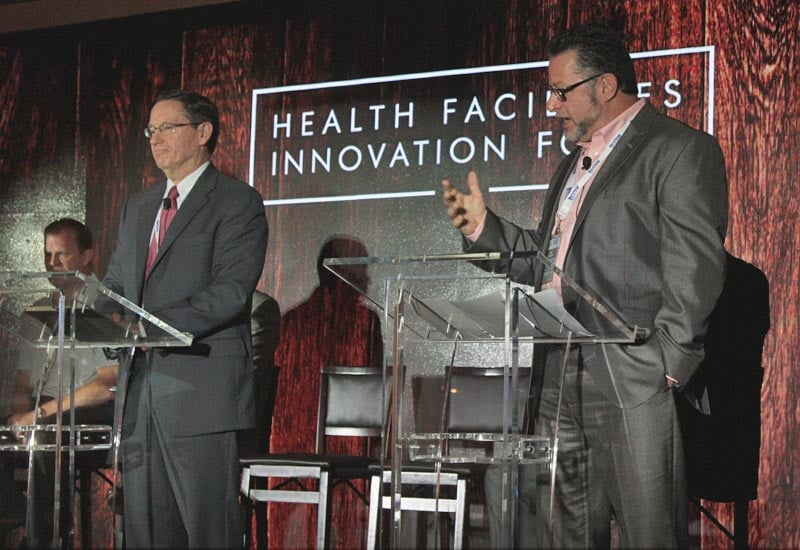
“We can no longer approach business as we used to be. We need a new approach for integrated teams, we must be at the strategy table to prevent messy deals that we’re left cleaning up for years. The shift from deliberate new building construction to practice acquisition off-site, the pendulum has swung and the pace is picking up because folks are trying to move so fast that it introduces a tremendous risk to our side of the business,” he said.
In Aucremanne’s eyes, understanding the market every single day is essential in this time where there’s a need for speed. “You have to be constantly scanning the market. When strategy walks in, you have to know what’s available and what the fair market value is.”
On the other side, Levicoff outlines his strategy for St. Luke’s most recent project, a new hospital that had almost 200 doctors before breaking ground. “Our process is to look for the land in an incognito way, we hire a real estate agent so we can buy it quietly or the price would triple if they knew who we were. Then we build it, and once the sign is up we have more docs trying to come in. Everyone wants the new, they look for the new, so we have to look for land and we have to build,” he said.
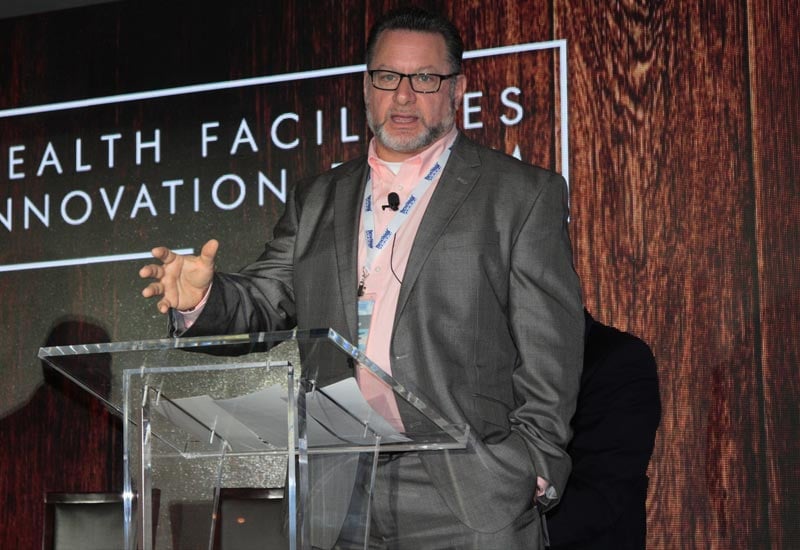
Remote Facilities Services
Insourcing, outsourcing or a mix of both: how do you make the best decision when dealing with remote facilities? D’Arcy explains how insourcing technicians to remote facilities works for UHS Inc.; and although St. Luke’s University Network also insources, we asked Levicoff to propose a case for outsourcing.
“In this world of competitive healthcare you have to be there for your customer. We’re in a space of telemedicine and people now get on their computers to talk to their doctors.
There’s Urgent Care centers providing better access at lower price points, and they are maybe a prelude to the ACO’s taking hold.”

He cites the success of Kaiser Permanente’s model as the insurer and provider, with a goal to keep patients out of their hospitals. “I think that’s where we are headed. From our standpoint, we do it all in-house. Most things require us to be close to the mother ship, many things you have to be a certain mile radius,” he says. “We give our staff more work, and their job is to manage and service that group of remote facilities.”
From Levicoff’s POV, outsourcing gives back to the local community and makes for a successful integration.
“If you’re 100 miles away from the mothership, the best way to sell it is to tell everyone that we’re not just adding a couple jobs in the neighborhood, but we’re truly bringing your people in. Finding local contractors involves the community to add participation, take pride in the project, build trust and not look at us like foreigners. They know who we are and where we’re coming from, but they feel like it’s THEIR St. Luke’s.
Hiring local makes it become a neighborhood hospital.”

Mergers & Acquisitions + Divestitures
2016 was the year of “merger mania,” according to a recent PwC report. Significant industry disruption is underway as the system strives to better serve increasingly savvy customers at lower costs. Edwards and Holmes reported on how Banner Health and Texas Health Resources balance the strategy and execution of these moving parts.
Banner Health, which has a lot of M&A going on from practices to entire medical centers, just acquired 35 Urgent Care locations. “The biggest challenge is culture, and systems and processes, and bringing them in as rapidly as possible so they can be effective. For facilities specifically, the biggest challenge is deferred maintenance,” Edwards said.
Many big facilities are merging because they’re capital-starved, which means they’re not making the investments they should. The consequence on facilities? Expect a certain number of fire drills--fix those immediate needs, and then make a long-term plan focused on energy and building performance, which are investments that return.
“We’ve had a few nightmares, two come to mind. Experiences like at Casa Grande Hospital where we discovered that gas panels hadn’t worked in 2 years. Also noticed a problem with the OB services, they shared a door with prisoners being brought in, so the expectant mothers and prisoners were side-by-side waiting at the elevator. Then we had a large medical center in Tucson that had a power outage one day, the transformer blew up and we had to scramble to fix that. You’ll run into these things all the time.''
''My advice is to position some resource, some capital, and some expect the fire drills.''
At Texas Health Resources, the focus is on alternate partnerships rather than M&A. Still, Holmes agrees that culture is an important challenge. He expounds on lessons learned from both successful and trickier partnerships: “Our partnership with UT Southwest designing a new hospital is going smoothly because it was made clear at the beginning that it was going to be a THR hospital operated by our team.”
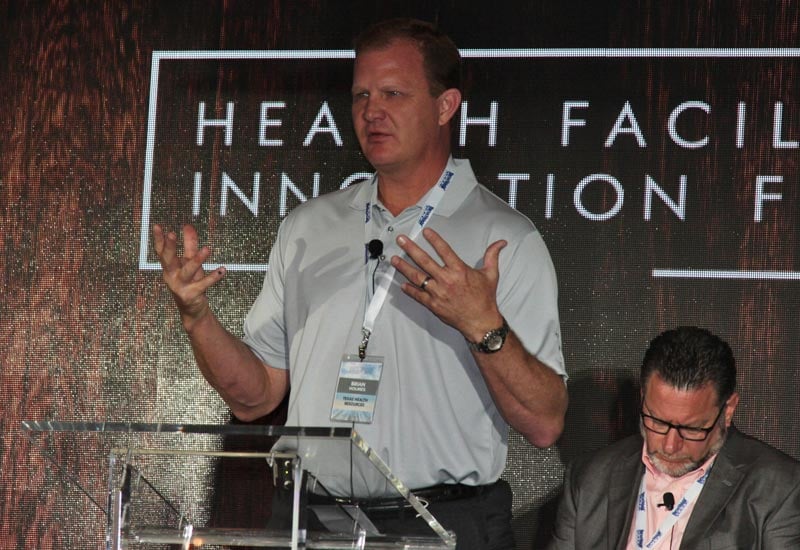
What complicates partnerships is remote and scattered leadership that makes standardization difficult. “The source of many mergers is that one organization isn’t able to make it by themselves, which is the case with a large multi-state hospital with an orphan site in Dallas. As a standalone hospital they were losing money because they had no strength in negotiating, so we now have 51% ownership. As soon as our managed care rates applied, they started making money.”
“The design and construction process was more challenging because the decision-making was being done out of state, and it’s not as easy to integrate/ standardize our practices.”
Holmes remains adamant about letting the owner develop the project. “My concern is about putting my team in a position where they can’t win. The hardest part is managing the owner.
Everyone makes mistakes, but it takes the owner to really screw a project up, so whoever’s running it- whether it’s us or the partner- should be the one developing it.
We can’t do it for the partner because we don’t have authority over them and it will make everyone miserable.”
Doing More Faster with Less
More likely than not, you don’t need an explanation for this challenge. D’Arcy and Aucremanne shared insights on the perpetual stressor of doing more faster with scarce capital at UHS Inc. and Cleveland Clinic.
D’Arcy addressed the pressure to reduce initial and operating costs on remote facilities, which he thinks will lead to two consequences:
“One, the industry is going to become more transparent. You can already see quality metrics online. With higher deductibles, consumers will get much more engaged with the cost of the care. When the consumers demand it, it will happen. Which leads to the second consequence…
Two, we will start designing around the total cost instead of the first cost. The first cost is 5%, the total cost is 95%, which is what we must start designing around. UHS leans the process (how many steps does it take to get the patient from here to here, etc) and then we design around it. We started an incentive in Las Vegas hospital tied around health acquired infections.
For example, 50% of patient falls happen at nighttime from the bed to the bathroom, so we can do small things with lighting, handrails, etc. which all truly have an impact on quality. We need to design facilities that are safe first and foremost, focused on energy and medical waste, and there’s so many opportunities for improvement.”
Aucremanne echoed the pressure to reduce cost, citing a recent conversation with Cleveland Clinic’s CFO to reduce initial costs of buildings.
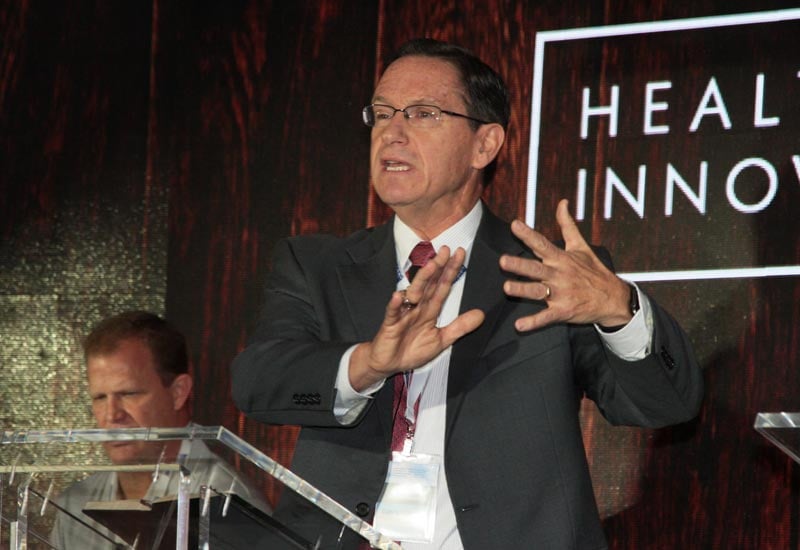 “Our CFO said: with how fast the market is moving, why don’t we build 15-year buildings instead of 50 to 70-year ones? This is going to require a tectonic shift at the clinic. The argument is less about life cycle costs but how we approach facilities in total, do we go with more commercial build? In one of our recent JVs, to keep costs down we said: you design it, you build it, you operate it, we’ll be a 49% partner. It kept our fingerprints off it. We’re trying to learn how to do that because we can no longer afford to do business as usual.”
“Our CFO said: with how fast the market is moving, why don’t we build 15-year buildings instead of 50 to 70-year ones? This is going to require a tectonic shift at the clinic. The argument is less about life cycle costs but how we approach facilities in total, do we go with more commercial build? In one of our recent JVs, to keep costs down we said: you design it, you build it, you operate it, we’ll be a 49% partner. It kept our fingerprints off it. We’re trying to learn how to do that because we can no longer afford to do business as usual.”
Watch the video of the full debate below. Enjoy!

Posted by
Collaborate with your Peers!
HealthSpaces is a community for people that plan, design, build and operate spaces where healthcare is delivered.
June 7-9, 2026 | Braselton, GA
Learn More




-4.png)
-Dec-09-2025-05-48-44-4379-PM.png)
-4.png)
-1.png)
-2.png)

Comments